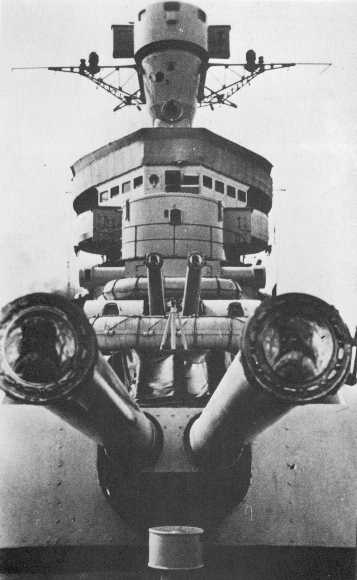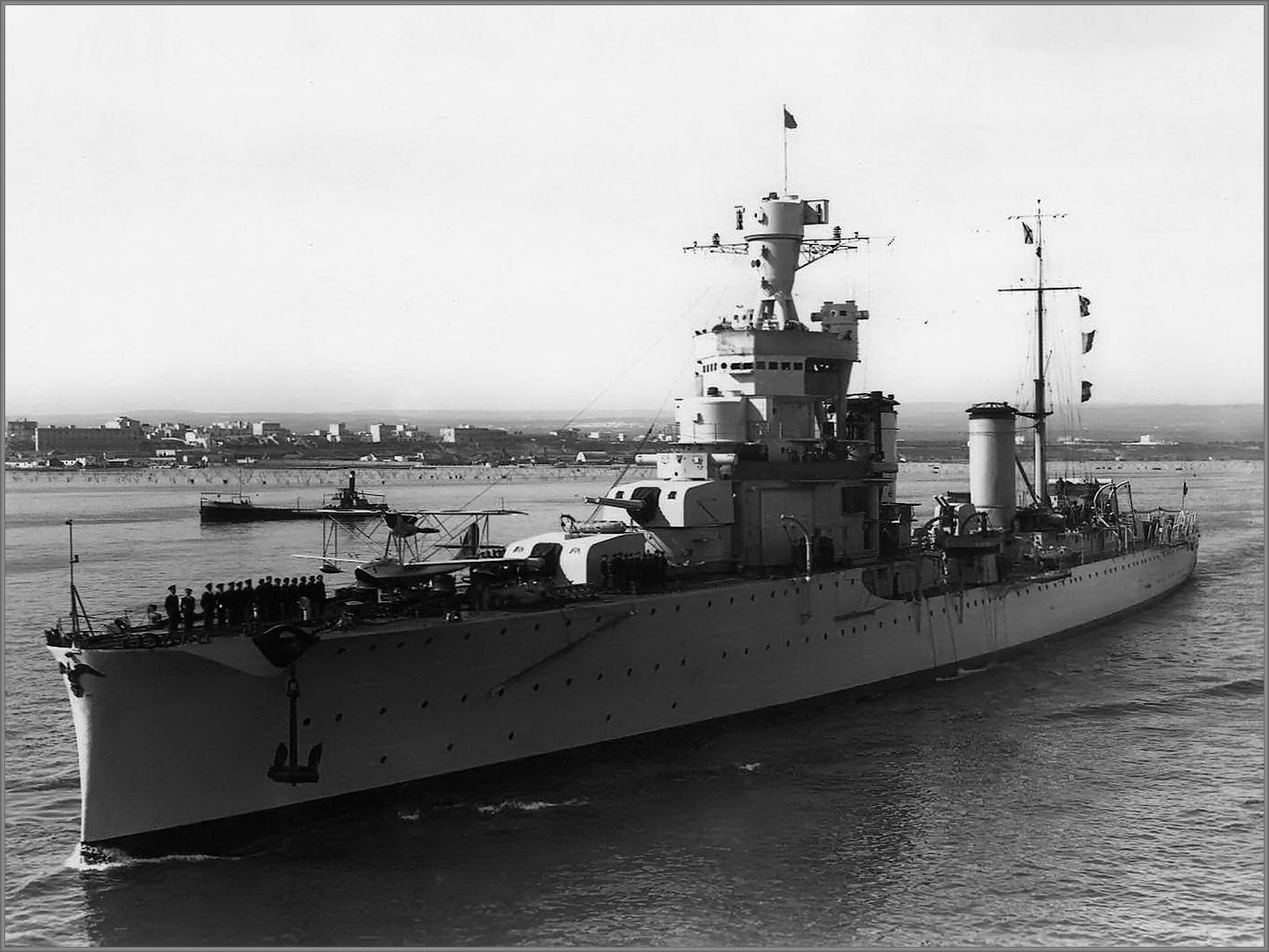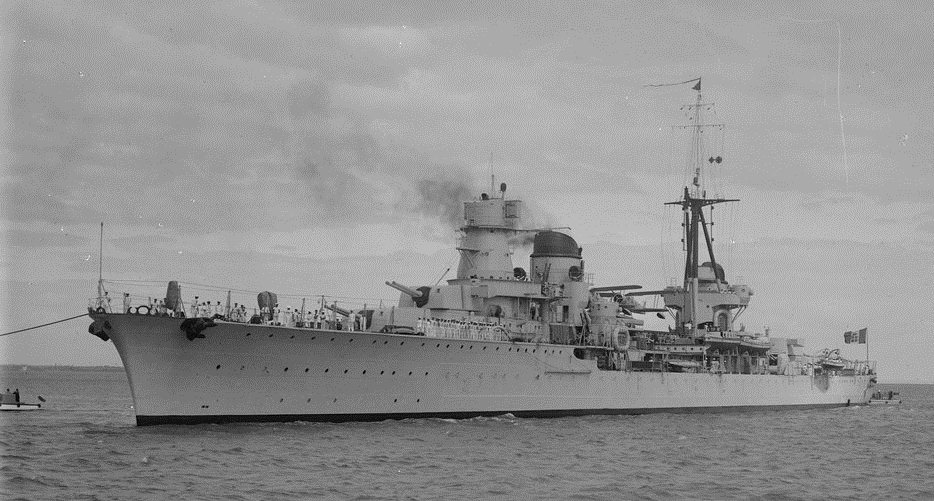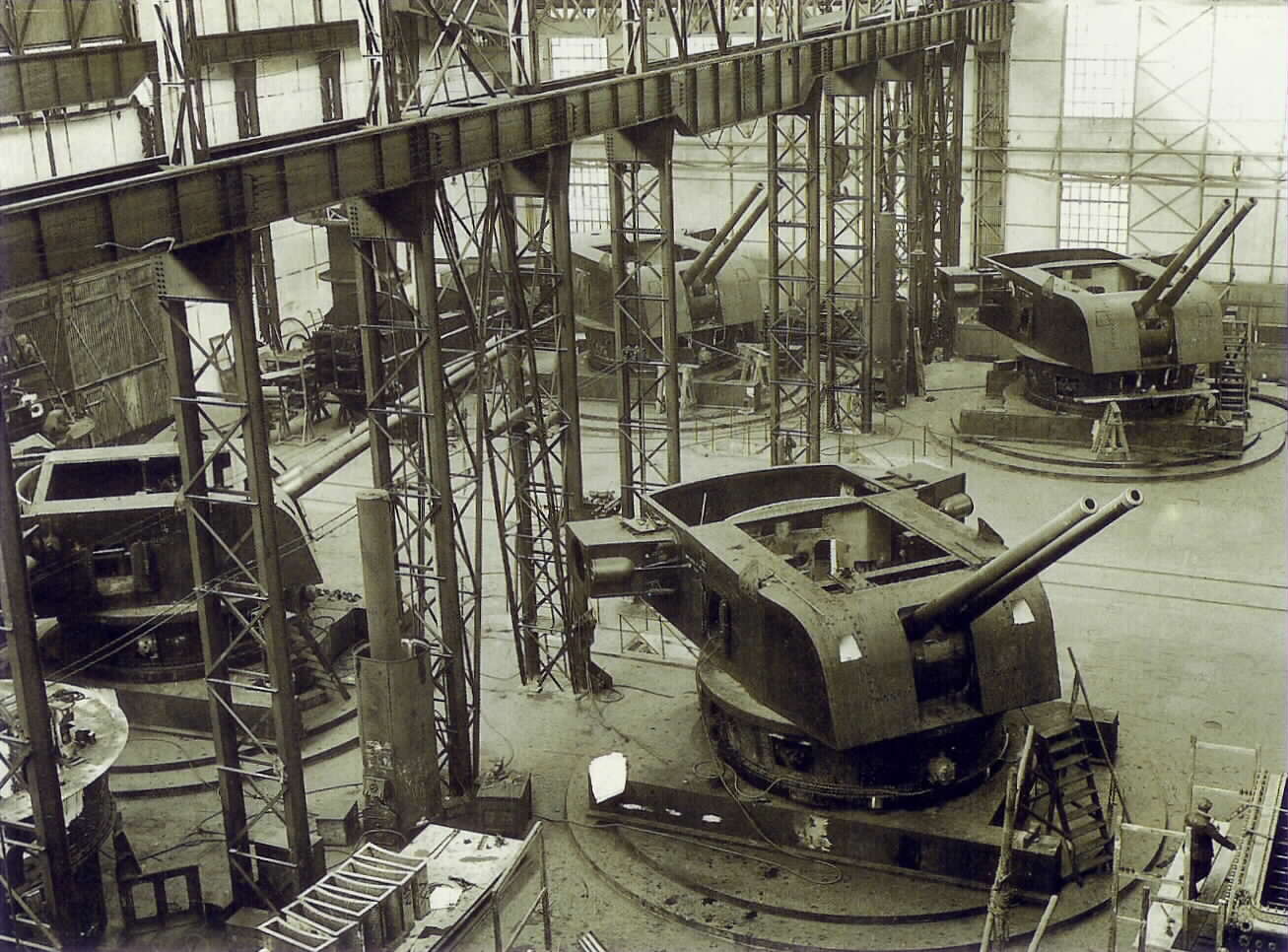Used on all "Condottieri" light cruiser classes except the Garibaldi class. The 1926 and 1929 Models were by different manufacturers and components from each manufacturer were apparently not fully interchangeable.
As in many Italian twin mountings, these guns were mounted closely together which reportedly caused some interference problems. The mountings in the 1st and 2nd groups (Alberico da Barbiano and Luigi Cadorna classes) were too lightly built for the recoil forces created by the very high muzzle velocities of these weapons.
Construction of the Ansaldo guns seems to have varied from gun to gun. One drawing of a relined gun shows A tube, jacket and a very heavy breech ring screwed to the jacket with a square thread, and a relatively thick taper liner with a retaining bush screwed into the rear end of the jacket. The OTO guns used a thin, loose liner of the Pittoni type, A tube, full length jacket and breech ring. All guns used sliding horizontal breech blocks.
Historical note: These cruisers were named after famous leaders ("Condottieri") of mercenary bands in Renaissance Italy.
| Designation | Ansaldo 152 mm/53 (6") Model 1926
OTO 152 mm/53 (6") Model 1929 |
|---|---|
| Ship Class Used On | Model 1926: 1st "Condottieri" - Alberico da Barbiano class
Model 1929: 2nd, 3rd and 4th "Condottieri" - Luigi Cadorna, Raimondo Montecuccoli and Emanuele Filiberto Duca d'Aosta classes |
| Date Of Design | 1926 / 1929 |
| Date In Service | 1928 / 1930 |
| Gun Weight | Ansaldo: 7.22 tons (7.34 mt)
OTO: 7.57 tons (7.69 mt) |
| Gun Length oa | Ansaldo: 336.4 in (8.544 m)
OTO: 336.3 in (8.541 m) |
| Bore Length | 318.0 in (8.077 m) |
| Rifling Length | Ansaldo: 263.1 in (6.682 m)
OTO: 262.9 in (6.679 m) |
| Grooves | 40 |
| Lands | N/A |
| Twist | Uniform RH 1 in 30 |
| Chamber Volume | 2,044 in3 (33.50 dm3) |
| Rate Of Fire 1 | Model 1926: 4 rounds per minute
Model 1929: 5 - 8 rounds per minute |
- ^In the Model 1926 a loader which transferred the shell to the breech remained in position while the rammer pushed the shell into the gun. In the Model 1929 a reciprocating lever transferred the shell onto the loader and, when the rammer pushed the shell into the breech, the lever descended to pick up the next shell and was ready to transfer onto the loader immediately following the firing of the preceding round. The Model 1929 was thus able to fire twice as fast as the Model 1926.
- These guns suffered from excessive longitudinal dispersion which was blamed on a variety of factors, some of which were a result of the light nature of the weapon itself. Its complex nature also made it hard to maintain.
| Type | Separate |
|---|---|
| Projectile Types and Weights 1a | AP (1926): 110 lbs. (50 kg)
AP (later issue): 104.7 lbs. (47.5 kg) HE: 97.7 lbs. (44.3 kg) |
| Bursting Charge | AP: 2.05 lbs. (1.0 kg)
HE: 5.18 lbs. (2.3 kg) |
| Projectile Length | AP: 24.8 in (63.0 cm)
HE: N/A |
| Propellant Charge | 47.2 lbs. (21.43 kg) |
| Muzzle Velocity 2a 3a | AP (1926): 3,281 fps (1,000 mps)
AP (later issue): 2,789 fps (850 mps) HE: 3,117 fps (950 mps) |
| Working Pressure 2a | 20.95 tons/in2 (3,300 kg/cm2) @ MV of 3,281 fps (1,000 mps)
19.4 tons/in2 (3,050 kg/cm2) @ MV of 2,789 fps (850 mps) |
| Approximate Barrel Life | N/A |
| Ammunition stowage per gun | da Barbiano class 4a Peace: 35 rounds War: 50 rounds Others: N/A |
- ^Dispersion problems with these weapons is said to have been primarily the result of imprecise construction of the projectiles and that they varied in weight from round to round. The propellant charges also varied in weight. Another problem was that there were a high number, as much as 10 percent, that simply failed to fire due to mechanical faults or delays in loading. The breech closure, the loaders, the hoists and the action of the primer were all liable to failure.
- ^The sources below disagree as to the shell weight, muzzle velocity and ranges of these guns. I have chosen to use those figures given in "Naval Weapons of World War Two."
- ^Peace-time outfit of Alberico da Barbiano class was 140 AP and 140 HE which was increased by about 50 percent during World War II. This was significantly less than the outfits carried by cruisers of other navies but this was somewhat offset by the fact that the Italian cruisers were not expected to operate far from home and so could be easily resupplied.
| Shell | Elevation | Muzzle Velocity | Distance |
|---|---|---|---|
| 110 lbs. (55 kg) AP (original) | 45 degrees | 3,199 fps (975 mps) | 31,060 yards (28,400 m) |
| 104.7 lbs. (47.5 kg) AP (WWII) | 2,789 fps (850 mps) | 24,716 yards (22,600 m) | |
| 97.7 lbs. (44.3 kg) HE (WWII) | 3,068 fps (935 mps) | 26,900 yards (24,600 m) |
| Designation | Twin Turrets
da Barbiano Class (4): Model 1926 Cadorna (4), Montecuccoli (4) and Duca d'Aosta (4) classes: Model 1929 |
|---|---|
| Weight | Model 1926: 83.7 tons (85 mt)
Model 1929: N/A |
| Elevation | Model 1926: -5 / +45 degrees
Model 1929: -10 / +45 degrees |
| Elevation Rate | 5 degrees per second |
| Train | about +150 / -150 degrees |
| Train Rate | 6 degrees per second |
| Gun recoil | N/A |
| Loading Angle | Model 1926: +20 degrees
Model 1929: Any |
- Turrets were electrically powered for training and elevation as were the chain rammers. Alberico da Barbiano class used electric dredger hoists and a swinging arm pivoted at the trunnions which conveyed ammunition on a tilting tray to the loading tray. Later ships had unspecified improvements. Empty shell cases were transported mechanically to a compartment below the turret floor, except in the 4th group where a conveyor belt pushed them forward to ports in the turret face.
- Gun axes were 29.5 in (75 cm) apart.






"Naval Weapons of World War Two" by John Campbell
"Italian Warships of World War II" by Aldo Fraccaroli
"Anatomy of the Ship: The Cruiser Bartolomeo Colleoni" by Franco Gay and Valerio Gay
---
Marina Militare Press Releases
---
OTO-Melara Press Releases and Photographs
Leonardo - Il Progetto Fotografia e Industria [The Photography and Industry Project]
---
Special help by Buddy Stewart
21 September 2008 - Benchmark
16 June 2012 - Added photographs of Armando Diaz and Raimondo Montecuccoli
07 April 2018 - Converted to HTML 5 format and reorganized notes
13 April 2020 - Added photograph of OTO factory
01 April 2021 - Added photograph of Alberto da Giussano
18 January 2022 - Corrected typographical error
20 December 2024 - Added sketch of cartridge

